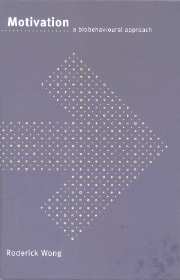Book contents
- Frontmatter
- Contents
- Preface and acknowledgements
- 1 Introduction and perspective
- 2 Mating and reproductive activities
- 3 Parental/maternal activities
- 4 Feeding activities
- 5 Food selection
- 6 Drinking activities
- 7 Stimulus seeking and exploratory activities
- 8 Aversive motivation systems: fear, frustration and aggression
- 9 Social motivation: attachment and altruism
- 10 Conclusions and retrospective
- References
- Author index
- Subject index
1 - Introduction and perspective
Published online by Cambridge University Press: 10 December 2009
- Frontmatter
- Contents
- Preface and acknowledgements
- 1 Introduction and perspective
- 2 Mating and reproductive activities
- 3 Parental/maternal activities
- 4 Feeding activities
- 5 Food selection
- 6 Drinking activities
- 7 Stimulus seeking and exploratory activities
- 8 Aversive motivation systems: fear, frustration and aggression
- 9 Social motivation: attachment and altruism
- 10 Conclusions and retrospective
- References
- Author index
- Subject index
Summary
WHY THIS BOOK?
This book is concerned with the analysis of motivated behaviour from a biological perspective. Although some psychology students may find biological topics less to their personal tastes than material that is specifically human-oriented with a social emphasis, I hope that they may be pleasantly surprised by the material in this book. It is possible to link these topics and it has been attempted in a third year undergraduate Motivation course which I taught from such a perspective at the University of British Columbia, Canada, for over 30 years. The encouraging reactions of these students during lectures and in their course ratings has motivated me to share some of this material with you.
Texts by Colgan (1989) and Toates (1986) have focused on some issues in animal motivation which form the corpus of the present book, but these earlier books were relatively short and very selective in their coverage. Although this book adopts a conceptual framework similar to that developed in the Colgan and Toates books, it is less restrictive and thus appropriate for a broader based Motivation course. Most of the recent texts on motivation (e.g. Franken, 1994; Mook, 1996; Petri, 1996) are expansive, eclectic and almost encyclopaedic in their coverage of topics. Although the framework of this book is derived from the animal motivation tradition, it can also be used to analyse relevant issues in human motivation. Thus this work sits between the larger omnibus motivation texts and the smaller ones that focus specifically on animal motivation.
Almost every text devotes a chapter, or at least a section of one to the history of motivation, and then lists various definitions of this concept by different theorists.
- Type
- Chapter
- Information
- MotivationA Biobehavioural Approach, pp. 1 - 12Publisher: Cambridge University PressPrint publication year: 2000
- 1
- Cited by



